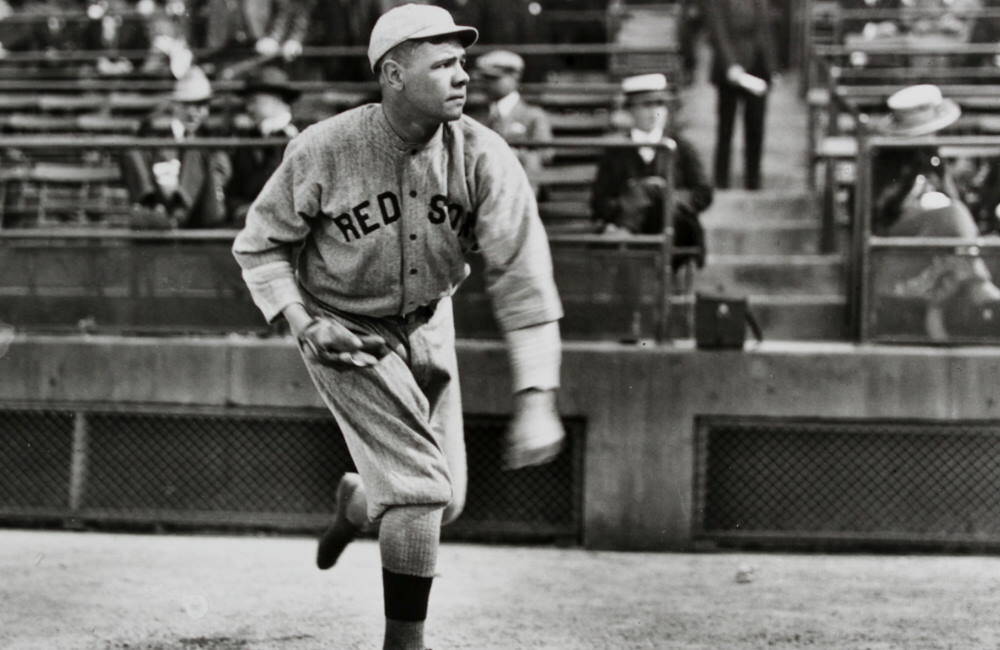Babe Ruth remains revered to this day for his play almost a century ago, and it’s well-deserved. Ruth could have made the baseball Hall of Fame on his pitching alone, but then he went on to invent the power baseball that remains part of the game to this day.
Despite his greatness, a question many baseball fans love to discuss is this: Would Babe Ruth still be a star if he played in today’ Major League Baseball? Most experts agree that he most certainly would, even if he wasn’t quite so iconic, for the simple fact that his skillset is one that works in any era.
One of the great attractions when you play free sim baseball now is the chance to match up Ruth with thousands of players throughout baseball history. How well would Ruth perform against Sandy Koufax or Randy Johnson? Now, you can find out.
Intriguing Matchups for Babe Ruth
Babe Ruth started his career in the Deadball Era in 1914, pitching for the Boston Red Sox. He thrived in that era, winning 23 games in 1916 and 24 in 1917. His ERA in those years was 1.75 and 2.01.
Best Moments of Yankees Baseball
When he went to the New York Yankees in one of the best moments in Yankees history – and a memorable moment for the Red Sox for all the wrong reasons – Babe Ruth became the power hitting icon we remember today. Starting in 1920 in New York, Ruth hit more than 30 home runs in 12 of the next 13 seasons (hitting 25 in an injury shortened 1925).
Best Moments of Red Sox Baseball
Given his many talents, intriguing matchups with Ruth abound.
Babe Ruth in Modern Stadiums
Many of today’s stadiums are built for power hitters, and Ruth would thrive. Some of the most hitter-friendly parks include Rogers Centre in Toronto, the Great American Ballpark in Cincinnati, Angel Stadium in Anaheim and, yes, Fenway Park and Yankees Stadium. But the most intriguing possibility is Ruth playing for the Colorado Rockies in Coors Field, where the balls fly in high altitude and Ruth would put up monster numbers.
Babe Ruth Against Modern Hitters
Today’s hitters study film, come to the plate with strategies in mind for individual pitchers and are considered better than ever. But how would they do against a 6-foot, 2-inch left-handed fireballer who struck out 170 hitters in 1916?
Babe Ruth As a Red Sox
What if the famous move (or infamous, if you live in the great Boston area) that Ruth made from the Red Sox and Yankees never happened? What if the Red Sox, rather than spiraling into a postseason drought that lasted until 1946, had instead played through the 1920s and first half of the 1930s with Ruth, either pitching or hitting?
Babe Ruth As The Missing Piece
Every baseball fan has at least one favorite team that fell short in a year where they were really, really good, but one player short of greatness. Can one player, when that player is Babe Ruth, make the difference? It’s fun to consider the impact Ruth would have on just about any second place team in league history, especially teams that seemed so close to greatness, like the Los Angeles Dodgers in many seasons between 2001 and 2019. Other almost-great teams that didn’t win the World Series:
- 2004 St. Louis Cardinals
- 2001 Seattle Mariners
- 1988 Oakland Athletics (imagine adding Babe Ruth to the “Bash Brothers”)
- 1954 Cleveland Indians
An Expert Opinion on Babe Ruth
One of the beauties of baseball is the ability to compare statistics across so many different eras. Babe Ruth clearly was the dominant figure in baseball in the 1920s and early 1930s. But would he still be that big of a player today?
It’s all speculation, but author Jane Leavy, who authored a biography of Ruth, told The Smithsonian that Ruth’s abilities would shine in any era. She noted his superior size and abilities, although she noted more players would equal him in size today. She also noted that he never had to face Black players.
That said, Leary said Ruth would bring the same personality and spark to the game both on and off the field.
“I think he was a revolutionary, an inadvertent radical, a man who decided not that he was bigger than the game but to make the game bigger than it was,” Leary said. “He reinvented the game on and off the field in his own image.”


“She also noted that he never had to face Black players”-this is false. She talks about him facing other negro players. Sure, he never had to face black players in the MLB, but taken out of context, this is a false, misleading statement